Rick B - Jul 13, 2006 10:15 am - Voted 10/10
Circular vs. LinearVery interesting article! But a quick check for buying polarisation filters on the internet learns me that there are two types, circular polarisers and linear. Maybe you can explain the difference between these as well?
Anyway, thanks for the article :-)
Cheers,
Rick
Gangolf Haub - Jul 13, 2006 10:56 am - Hasn't voted
Re: Circular vs. LinearI really forgot about it - you need to check your camera manual which kind of filter is best for you - my Minolta fo instance works only with circ pol filters since the coating of the chip itself somehow affects polarisation.
Gangolf Haub - Jul 13, 2006 11:21 am - Hasn't voted
Re: Circular vs. LinearJust found an article (had I known I could have used it :o)):
article
It seems that you need circ-pol in anyway since the autofocus and -exposure mechanisms might get fooled by linearly polarized light.
Circularly polarised light does not "swing up and down" along an axis like in the pictures above but rather moves circularly along the viewing pane. You can superimpose a sine and a cosine wave to obtain this circular "motion".
Rick B - Jul 18, 2006 5:55 pm - Voted 10/10
Re: Circular vs. LinearHey just to let you know - I bought one :D
And I bet I'm not the only one who was tempted after reading this, you just did the filter companies a big favour ;-)
Gangolf Haub - Jul 19, 2006 9:33 am - Hasn't voted
Re: Circular vs. LinearDamn! You found me out :-)
brenta - Jul 13, 2006 2:28 pm - Voted 10/10
Thin-Mount FiltersThanks for the interesting article.
In the discussion of vignetting, you may want to mention that it can be mitigated, or even eliminated, by buying a thin-mount filter. The drawbacks are higher cost and absence of a front thread. The latter means that you cannot stack filters, but if you are already dealing with vignetting, you probably don't want to stack filters anyway.
Gangolf Haub - Jul 13, 2006 2:53 pm - Hasn't voted
Re: Thin-Mount FiltersThanks - I did the changes :-)
nartreb - Jul 13, 2006 2:52 pm - Voted 10/10
blur"A telephoto shot on a bright day gets blurred if the exposure time is longer than the reverse of the focal length (f=200mm -> t<1/200s)."
Unless you use a tripod. But what does a "bright day" have to do with it? The rule is about camera shake being effectively magnified by a long lens. A bright day lets you shorten the exposure, sure, but the rule is unchanged. (Alternatively, a bright day lets you use a smaller aperture, which increases depth of focal field, but it's not that kind of blurring we're worried about here.)
PS the external link is broken - there's an excess <b on the end of the URL.
Gangolf Haub - Jul 13, 2006 3:01 pm - Hasn't voted
Re: blurYou're right - of course. For me bright days are associated with unproblematic shooting. No reason to worry about exposure times if you're on automatic. It took me quite a while, I must confess, to find out why suddenly some of my telephoto shots were blurred.
And no - I don't lug tripods around with me and rather take snapshots than planned photographs. Thus it often occurs (or rather occurred) that my shots got a bit shaky ;-)
Gangolf Haub - Jul 14, 2006 11:07 am - Hasn't voted
Re: point and shot polarizer?Most of the pictures you see on this page (e.g. the signature pic on top or the pano have been shot by holding a filter in front of my Nikon CP 5700. It's not really "point and shoot" but as close as it gets. I went the other way - I now again rely on a (heavy) SLR, a Konica Minolta Dynax 7D but I still have to struggle with it. For me the Nikon was far easier to use with respect to the results.
brenta - Jul 14, 2006 2:46 pm - Voted 10/10
Re: point and shot polarizer?I've never used one, but some point-and-shoot cameras, e.g., the Canon A700, can be fitted with a lens adapter on which one can mount filters. Some Nikon Coolpixes like the 8800 also have this option. My Minolta A200, not a point-and-shoot, but not a dSLR either, has a threaded lens barrel that takes 49mm filters. Then again, it exibits a bit of vignetting at low focal lengths even with a thin polarizer.
Michael Hoyt - Jul 13, 2006 10:13 pm - Voted 10/10
Things to keep in mindGood article on the use of polarizing filters. I’ve used them for years and have discovered (either read or heard from others) a few useful things I try to keep in mind when using one…
When shooting pictures outdoors, the areas of greatest polarization lie in an arc at a 90 degree angle to the position of the sun in the sky. An easy way to find those area is to hold your thumb and index finger at 90 degrees to each other (sort of like we did as kids when we used our hands to play cops an robbers), point at the sun with your index finger and rotate your thumb through an arc. If you’re shooting a picture at any point on or close to that arc, you can achieve a high degree of polarization by using a filter.
There are some cases in which you do not want the full polarization a filter can provide. For instance, at higher altitudes when you shoot a picture at certain angles from the sun, if you rotate the polarizing lens to cause the full amount of polarization, portions of the sky will appear almost black. That may not be the effect you’re after. In such cases rotate the filter only until you get the effect you want, but no more.
Circular polarizer filters are designed for and should be used with any camera which has through-the-lens light metering and/or auto-focus. Most modern SLR cameras, both film and digital, do both.
Most polarizing filters that I am familiar with reduce the light passing through the lens by one stop (a measure for an amount of light). If you are using a camera set to automatic and the camera has through-the-lens metering, it will compensate automatically for the loss of light. If, on the other hand, you shoot pictures in a manual mode, you must make the compensating adjustment yourself by either opening the aperture one stop (from F11 to F8 say) or slowing the shutter speed by one stop (example - 1/30th to 1/15th of a second).
The higher one goes in altitude, the more one can expect the light to be naturally polarized, that is, the less need there is to achieve polarizations by using a filter. In practice, I’ve found this to be true but still prefer to use a polarizing filter in most cases. Of course I’ve only climbed 14ers, not the really high peaks.
Besides scenic pictures with lots of sky in them, another instance where the use of a polarizing filter is helpful, is when you’re taking pictures of water or things with water on them, such as rocks or plants after a rain storm. Water is highly reflective and the use of a polarizer allows you to reduce the amount of reflection to the extent that you wish. I find this useful on bright days when the surface of a lake can look completely washed out. Using a filter allows me to remove most of the wash-out so that the lake reflects background objects, mountains for instance, and makes the final picture more interesting. This seems to be especially true on a bright overcast day when the sun is not even visible.
One last point. If you want to use flash with a polarized lens, for instance in a case where you want to enhance the background using your polarizing lens, AND light the in-shadow face of a person in the foreground with your flash, you can do it without problems, IF you’re using a camera with through-the-lens metering. The electronics of the camera will handle the compensation for loss of light perfectly. This is a technique used by pro photographers every day in such situations and works particularly well on sunny days when your foreground subjects are facing away from the sun so they don’t have to squint.
The reason it works is, that even though you’re using a flash to light up foreground shadows, the background is being lighted by the sun. Therefore, the background is not underexposed as you first might expect. That’s because sunlight is much stronger than your flash and makes the background brighter than your flash makes the foreground.
If however, you try the same thing with a not-so-well-lighted background, such as on very cloudy days or when your background is in deep shadow, the background will be underexposed. That is a situation in which you don’t want to use a polarizing lens with a flash, unless of course, the underexposed background is the very effect you want to achieve.
Thanks again for the good article. I suspect SP will see the results over time in improving pictures as the members learn the benefits of polarization.
Gangolf Haub - Jul 14, 2006 11:04 am - Hasn't voted
Re: Things to keep in mindThanks for all these additions - I'm still learning :-) Like probably most of us I rely heavily on the automatic mechanisms of my camera. Thus my view might be a bit prejudiced in that direction. Very interesting about the flashlight pictures. I guess I'll have to try that some day.
Mark Doiron - Jul 20, 2006 4:48 pm - Hasn't voted
Re: Things to keep in mindAn example of flash and polarizer used simultaneously:
Courtney at the Helm
I wanted the young lady to be properly illuminated, of course, but I also wanted to "save" the dramatic clouds in the background. Interestingly the image also shows that polarizers do little to control stray reflections off of metal!
mark d.
Rick B - Jul 14, 2006 11:14 am - Voted 10/10
How about sunglasses.. do they cut through the gray veil as well? I don't have polarised sunglasses, but if this is true....
Gangolf Haub - Jul 14, 2006 1:35 pm - Hasn't voted
Re: How about sunglassesHehe, you have to wriggle your head to tune it to the perfect angle :-)
In ernest - the coating on sunglasses is meant mainly to eliminate reflections from the glasses themselves - you would really get strange effects if you turned your head with polarizers on your nose.
allari - Jul 15, 2006 2:29 am - Hasn't voted
Re: How about sunglassesPolarised sunglasses DO work very well. They are usually set up to cut the reflections of horizontal objects, such as the sea, or the snow.
However, unfortunately they cannot be used if you have a polariser on your camera, because the effects of the 2 polarisers would combine and you would not be able to understand what will be actually recorded by the camera. Worse than that, when 2 polarisers are rotated 90 degrees from each other, you get a completely black view!
gimpilator - Jul 14, 2006 4:31 pm - Voted 10/10
ThanksAs far as mountaineering and photography go, I'm just a beginner. But I have to say that this article has gotten me excited. Over the last year, I have had a lot of trouble with lighting and contrast, especially on or around glaciers. I just discovered that I had a polarizing filter lying around my house. Over the next few days I'll be climbing Mount Rainier. I'm going to bring the filter along and try it out. Thanks for submitting this article.
Vid Pogachnik - Jul 17, 2006 7:54 pm - Voted 10/10
Very good explained!You should teach, Gangolf! Or may be you actually do?
Cheers!
Gangolf Haub - Jul 18, 2006 3:52 pm - Hasn't voted
Re: Very good explained!Teach? No I don't - but it must be in my genes - both Dad and Mum were teachers - as were uncle and aunt and my grandad too. Sister is teaching at a university too.
So, Ifell out of line :-)



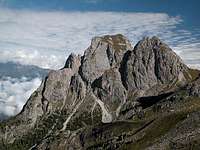
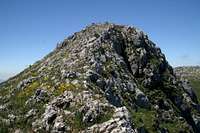





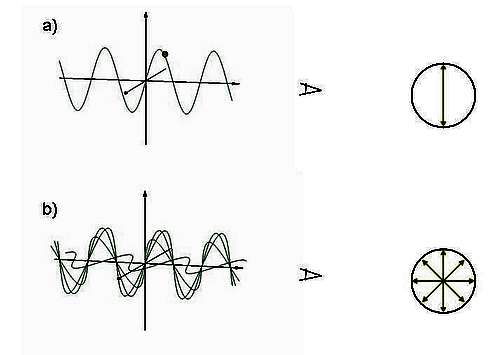
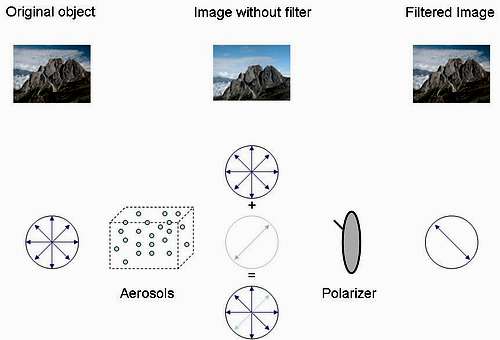

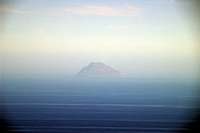

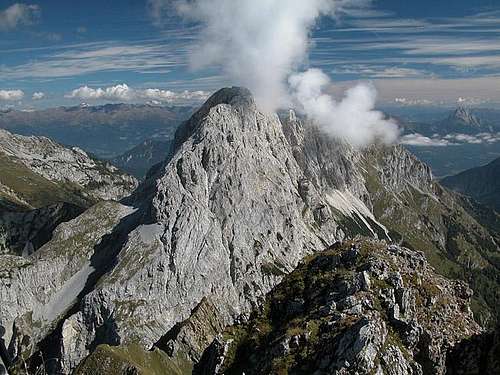









Comments
Post a Comment